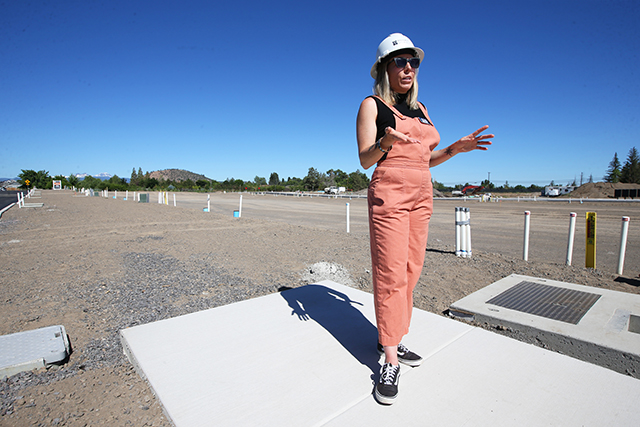Frittatas, French toast get more eggs on your table
Published 4:52 am Thursday, January 4, 2018

- Though frittatas may take a few tries to master, this Broccoli Rabe Frittata is worth the effort. (Zbigniew Bzdak/Chicago Tribune/TNS)
The egg is synonymous with potential. But let’s not get bogged down in symbolism.
Even for the most practical-minded cook, the egg is a marvel of possibility: Scramble it. Poach it. Boil it. Fry it. Beat a couple into an omelet. Whip several into a souffle. The choices nearly overwhelm.
Trending
But for my time and money, which is to say scant, I prefer the binder approach: Take whatever you’ve got on hand, and throw it in a pan with some eggs — which bring the ingredients together into something greater than the sum of its parts. For something savory, grab leftover vegetables and cheese. For a sweet take, stale bread and fruit. Or skirt the boundary with bread, apples, brie and pancetta. Master the basic concepts involved in making a frittata and baked French toast (aka strata), and you’ll have a potent strategy for dealing with both the time crunch of weeknight meals and making leftovers palatable.
These dishes became a regular part of our family’s weeknight dinner rotation many years ago when I was looking for a way to make use of care packages sent by my grandfather-in-law. He was a masterful and prolific Italian-American cook, and so he would periodically ship us boxes lined with ice packs and filled with freezer bags of sausage ground by a neighborhood butcher according to my grandpa-in-law’s specifications; jars of stuffed peppers mummified in bubble wrap; zip-close bags packed full of spicy broccoli rabe; and, just in case it wasn’t sold in the Midwest, Special K cereal.
My first attempts at making a frittata were born of rabe-induced guilt — the sheer quantity of it required something more than a simple reheat — and these first attempts were disasters: burned on the bottom, runny in the middle. Or, worse, scattered all over the kitchen floor after a failed flip. I had not yet learned two essential lessons.
First, get rid of as much water as you can from any ingredients going into the egg mixture. Cook it, drain it, squeeze it. Do whatever needs doing.
Second, use a broiler. Start your frittata on the burner and cook just until the edges are set. Poke it with a knife or a fork to get a sense of when it’s starting to firm up. Do not wait until the edges are peeling off the pan; by then, you’re frittata’s toast. Once the edges are set, finish it under the broiler until golden and the center is firm.
Worried it’s still not cooked on the bottom? Return it to the stovetop. These recipes encourage improvisation.
Trending
Baked French toast requires even less attention. You can prep it ahead and leave it in the fridge until you’re ready to bake. An hour before dinner, pop it in the oven and go about your business. And, burn-prone cooks need not fear; if it doesn’t seem quite set in the middle, just leave it in the oven a bit longer.
Perhaps what I like best about these egg recipes is that they taught me how to cook — not just follow a recipe. Once you learn that, the potential is limitless.
Baked French Toast
Prep: 10 minutes, plus soaking time; cook: 50 minutes to 1 hour; makes 6 servings
This works well with a streusel topping. Also, with dollops of ricotta or mascarpone dropped in — but not thoroughly mixed — before baking. For a smaller crowd, use 6 eggs, less milk and cook in a medium, oven-proof skillet.
8 eggs
1 C milk
1⁄4 C sugar
1 tsp vanilla
1⁄2 tsp salt
1 loaf challah, brioche or Portuguese sweet bread
1 C seasonal fresh fruit
Heat oven to 350 degrees; butter a 9-by-13-inch baking dish.
Whisk eggs, milk, sugar, vanilla and salt together in a bowl until well combined. Tear bread into 2-inch pieces, and soak them in egg mixture until fully saturated.
Pour mixture into prepared baking dish. Distribute fruit evenly. (Dish can be covered and refrigerated at this point up to 12 hours. If using a fruit prone to oxidation, add it just before baking.)
Bake until golden, 50 minutes to an hour. It should be well set in the center and spring back when slightly pressed.








